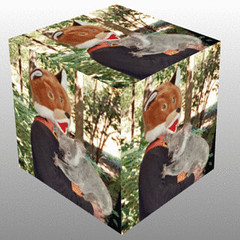The subjunctive is not used very often in English, but it is very common and important in Spanish. Some command forms are actually the subjunctive, so the formation of the present subjunctive should not be too difficult. Start with the first person singular yo conjugation in the present indicative tense, remove the final -o and add these endings:
Present Subjunctive
-ar verbs
-e
-es
-e
-emos
-éis
-en
-er and -ir
-a
-as
-a
-amos
-áis
-an
(Notice that -ar verbs use -e and –er/-ir verbs use -a)
Usually when there is an irregular spelling change in the present indicative of a verb, that form will be used for the stem of all of the subjunctive forms. Verbs than end in -erir, -ertir, or –entir use two different irregular spellings in the present subjunctive:
mentir in present subjunctive
mienta
mientas
mienta
mintamos
mintáis
mientan
The past subjunctive is formed from the third person plural of the preterite. Remove the -on ending, leaving you with -ar and -ier, and add these new endings:
Past (Imperfect) Subjunctive
all verbs
-a
-as
-a
-amos
-ais
-an
An accent is added to the stem vowel as well in the first person plural form. Instead of hablaramos, it is habláramos; instead of comieramos, it is comiéramos, etc. Note that there is another way to form the past subjunctive (a different set of endings), but the endings given are used more often. You must always the past subjunctive after como si.
Es como si fuera mi padre. It’s as if he were my father.
The present perfect subjunctive is formed with the present subjunctive of haber and the past participle of the main verb. Similarly, the past perfect subjunctive is formed with the past subjunctive of haber and the past participle of the main verb.
Present perfect subjunctive
haya
hayas
haya
hayamos
hayáis + past participle
hayan
Past perfect subjunctive
hubiera
hubieras
hubiera
hubiéramos
hubierais + past participle
hubieran
You must always pay attention to the correct usage of verb tenses. When the verb of the main clause is in the present or future, then the verb of the subordinating clause will be in the present subjunctive. But if the verb in the main clause is in a past tense, the verb of the subordinating clause will be in the past subjunctive.
Links
http://www.ielanguages.com/spanish4.html
http://www.youtube.com/watch?v=GbE5ORBSeu4
http://www.youtube.com/watch?v=B6jFcCQyuYk
http://www.youtube.com/watch?v=mlK3ZgGFpTU
Next: 071 Irregular Subjunctive Mood
Word Document at: 070 Spanish Subjunctive
WereVerse Universe Baby!











